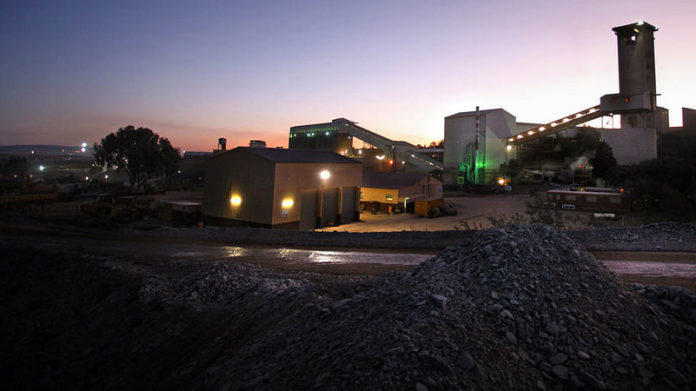
A SIX month strike at the gold mines of Sibanye-Stillwater will weigh heavily on interim share earnings, the company said today which also booked a non-cash loss on the value of US bonds following an increase in the firm’s share price.
Analysts said earlier this month following publication of Sibanye-Stillwater’s production numbers for the six months ended June that its financials would be “noisy” – despite stronger production – and so it would seem with a deferred tax credit on the US palladium/platinum operations as well as recognition of gains on its acquisition of Lonmin in South Africa coming into the picture.
The upshot is an expected loss per share of 11 South African cents, equal to 0.80 US cents for the first half. This compares to share earnings of three cents (0.28 US cents) for the first half of the 2018 financial year. A headline share earnings loss of 54 cents (3.80 US cents) would be booked versus four cents (0.36 US cents) last year.
Among the highlights, however, will be the impact of the strike at the Kloof and Driefontein mines west of Johannesburg, and the Beatrix mine in the Free State – the fruitlessness of which will be apparent.
Called by the Association of Mineworkers & Construction Union (AMCU) in November on the basis that a wage offer accepted by rival unions was unacceptable to it, the strike dragged on until April.
In the end, AMCU settled for the original offer accepted by the National Union of Mineworkers, UASA and Solidarity. In order to ease the transition back to work, Sibanye-Stillwater stepped in with assistance for employees who participated in the strike. Nonetheless, the strike helped precipitate restructuring at the gold division. This cost R387m in the period whilst a further R374m was sustained in “other strike costs”, Sibanye-Stillwater said today.
A further aspect affecting the numbers was the deferral of revenue from Sibanye-Stillwater’s Rustenburg [platinum group metal] operations in respect of the transition from purchase of concentrate to a toll processing arrangement. This was in terms of the purchase transaction with Rustenburg’s seller Anglo American Platinum.
In respect of the bonds, denominated in dollars, there was a fair value loss of R553m as the bonds traded well above par value amid an increase in Sibanye-Stillwater shares. The company’s share price gained about 57% from January to June 28, largely on the back of improved palladium and rhodium prices.
The share is now at over R20 per piece – not quite its 12-month high – amid a chunky increase in the rand gold price, partly fuelled by trade war escalations between the US and China, but also related to rand/dollar weakness as South Africa’s economy edges further into the mire.
Sibanye-Stillwater, which is due to present the production and financial figures on August 29 (Thursday), will most likely face questions regarding how it intends to incorporate Lonmin into its PGM portfolio.
Questions about the progress of talks with AMCU on a new platinum wage deal and the pros and cons of bidding for AngloGold Ashanti’s Mponeng and Mine Waste solutions assets, which is up for sale, are also likely to feature.









